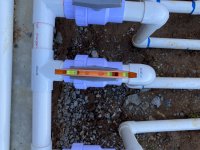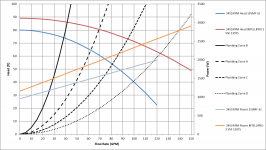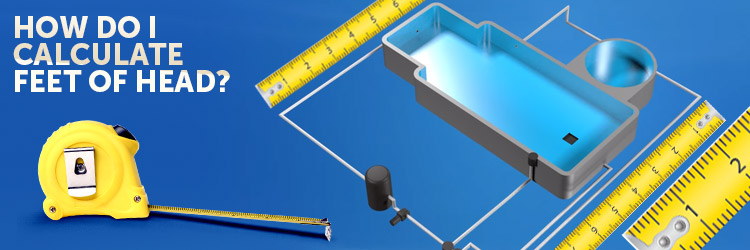I’ve been reading and following TFP articles and members for over 2 years now. This has helped tremendously in understanding terminology, engineering, and best practices in pool construction. However, I am now smack dab in the middle of construction and in a bit of a hard spot…
The original sales person we designed our pool and signed our contract with is no longer an employee for our PB. Here’s why that’s now an issue:
1.) He told us things like “Oh they will only pipe your pool with 2” pipes with the size of this pool and water features you are wanting” when we said we wanted the pool piped with 2” minimum. Because he said this, I didn’t know this was something that even needed to be written out in a contract.
IT IS NOW PIPED WITH 2” SUCTION (skimmers, drain), SLIDE STUB (which is supposed to be 1.5” per manual), AND STUB FOR FUTURE WATERFALL. AND 1.5” FOR x4 RETURNS AND 2 BUBBLERS. DOES THIS SEEM SUFFICIENT FOR WATER FLOW AND TURNOVER? HERE’S WHAT WE HAVE:
•25k gallon 41’x27’x18’ Freeform.
•1.5 HP Jacuzzi/Carvin VS pump
•425 sq ft cartridge filter
•SWG
•Turbo twister slide (25-40 GPM)
•2 bubblers (?GPM - basically just two 1.5” stub-ups at the moment)
•waterfall will be 3’ high with recommended 40 GPM.
•Approx. 40’ straight pipe run from pad to 1st 45°. Then, approx. 15’ straight pipe run to 1st 90°s. Then, it’s 45°s and 90°s in various places over 40’ around pool perimeter.
2.) He informed us that everything would be automated where we could control the pump, lights, everything all in an app.
NOTHING IS THE SAME BRAND, SO THIS WON’T BE POSSIBLE, RIGHT?
I made a crucial mistake thinking this company would use best practices at the pad, as well.
I am not satisfied with any of the plumbing and need help explaining what and why to the PB to get this corrected before any backfill is done. PLEASE HELP ME FIGURE OUT WHAT IS REASONABLE TO ASK FOR/CORRECT, AT THIS POINT, TO OPTIMIZE PUMP/EQUIPMENT EFFICIENCY AND DECREASE THE LIABILITY OF POTENTIAL LEAKS.
We are willing, as homeowners, to rerun all the plumbing ourselves. My husband is knowledgeable in flow and engineering.
Any help is greatly appreciated!










The original sales person we designed our pool and signed our contract with is no longer an employee for our PB. Here’s why that’s now an issue:
1.) He told us things like “Oh they will only pipe your pool with 2” pipes with the size of this pool and water features you are wanting” when we said we wanted the pool piped with 2” minimum. Because he said this, I didn’t know this was something that even needed to be written out in a contract.
IT IS NOW PIPED WITH 2” SUCTION (skimmers, drain), SLIDE STUB (which is supposed to be 1.5” per manual), AND STUB FOR FUTURE WATERFALL. AND 1.5” FOR x4 RETURNS AND 2 BUBBLERS. DOES THIS SEEM SUFFICIENT FOR WATER FLOW AND TURNOVER? HERE’S WHAT WE HAVE:
•25k gallon 41’x27’x18’ Freeform.
•1.5 HP Jacuzzi/Carvin VS pump
•425 sq ft cartridge filter
•SWG
•Turbo twister slide (25-40 GPM)
•2 bubblers (?GPM - basically just two 1.5” stub-ups at the moment)
•waterfall will be 3’ high with recommended 40 GPM.
•Approx. 40’ straight pipe run from pad to 1st 45°. Then, approx. 15’ straight pipe run to 1st 90°s. Then, it’s 45°s and 90°s in various places over 40’ around pool perimeter.
2.) He informed us that everything would be automated where we could control the pump, lights, everything all in an app.
NOTHING IS THE SAME BRAND, SO THIS WON’T BE POSSIBLE, RIGHT?
I made a crucial mistake thinking this company would use best practices at the pad, as well.
I am not satisfied with any of the plumbing and need help explaining what and why to the PB to get this corrected before any backfill is done. PLEASE HELP ME FIGURE OUT WHAT IS REASONABLE TO ASK FOR/CORRECT, AT THIS POINT, TO OPTIMIZE PUMP/EQUIPMENT EFFICIENCY AND DECREASE THE LIABILITY OF POTENTIAL LEAKS.
We are willing, as homeowners, to rerun all the plumbing ourselves. My husband is knowledgeable in flow and engineering.
Any help is greatly appreciated!










Last edited by a moderator:











